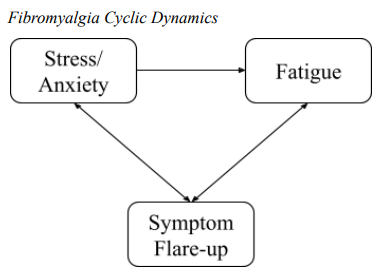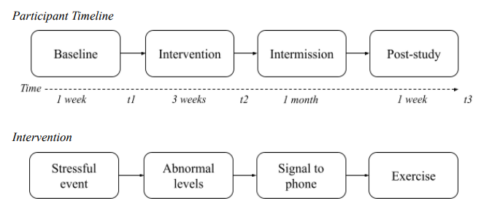In the IDA elective course "Advanced Applications: Individual Differences, Personality, and Health", students write a grant proposal on a topic to improve health in individuals with chronic diseases by promoting lifestyle change. Congratulations to Marvin Dophemont for winning (one of) the best grant proposal award!
The problem
Fibromyalgia is a complex chronic disease—its prevalence is relatively unclear; sources report a prevalence of up to 8% (D’Onghia et al., 2022; Lee et al., 2023), with a 2.4–6.8% prevalence in women. It seems most common in middle-aged (25–55 years old) adults and industrialized countries (D’Onghia et al., 2022; Lee et al., 2023). Its main symptoms are (1) chronic pain throughout the body, (2) increased pain sensitivity, (3) muscle stiffness, (4) tenderness to touch, and (5) brain fog (National Health Service, 2024; National Institute of Arthritis and Musculoskeletal and Skin Diseases, 2024). One of the major problems for people with fibromyalgia is that symptom intensity is severely affected by psychological factors (Marques et al., 2017; Treister-Goltzman 2023). Increased levels of anxiety and stress are associated with higher symptom intensity for people with fibromyalgia (Luque-Reca et al., 2022; Todd et al., 2024). In turn, these increased levels of symptom experience affect psychological factors such as fatigue or anxiety (Luque-Reca et al., 2022)—higher levels of anxiety are also highly associated with low sleeping quality and fatigue (Giannotta et al., 2024) which is a predictor for fibromyalgia symptoms (Figure 1; Clauw et al., 2011).

Summary and research questions
Implementing diaphragmatic breathing at the moment of increased levels of stress could significantly improve the daily QoL by breaking the cyclical effects within fibromyalgia symptomology. Simultaneously, doing the study this way allows for greater insight into fibromyalgia’s inter- and intra-symptom dynamics. Henceforth the research questions are: does diaphragmatic breathing in the moment of high levels of stress (in-)directly reduce fibromyalgia symptom intensity compared to not doing the exercise? Given that the intervention reduces symptom intensity, do these effects persist post-intervention? And how do fibromyalgia symptoms and psychological symptoms affect each other over time? Based on the literature it is expected that there will be a reduction in fibromyalgia symptom intensity after doing the exercise. Moreover, it is posited that effects will persist, post-intervention. Lastly, it is expected that there will be a nuanced reproduction of the cyclical effects of fibromyalgia symptomology

The proposed project fits the theme of personalized prevention and care. (1) The intervention uses individually unique baseline measurements to prompt the patient. (2) The exercise only gets prompted in situations of detected stress that are unique to the individual. (3) There is potential for a great increase in QoL while still being very cost-effective. (4) The intervention has the potential to diminish fibromyalgia symptom flare-ups. Lastly, (5) modeling individual inter- and intra-symptom dynamical models could give a unique insight into individual differences in fibromyalgia symptomology






Be First to Comment